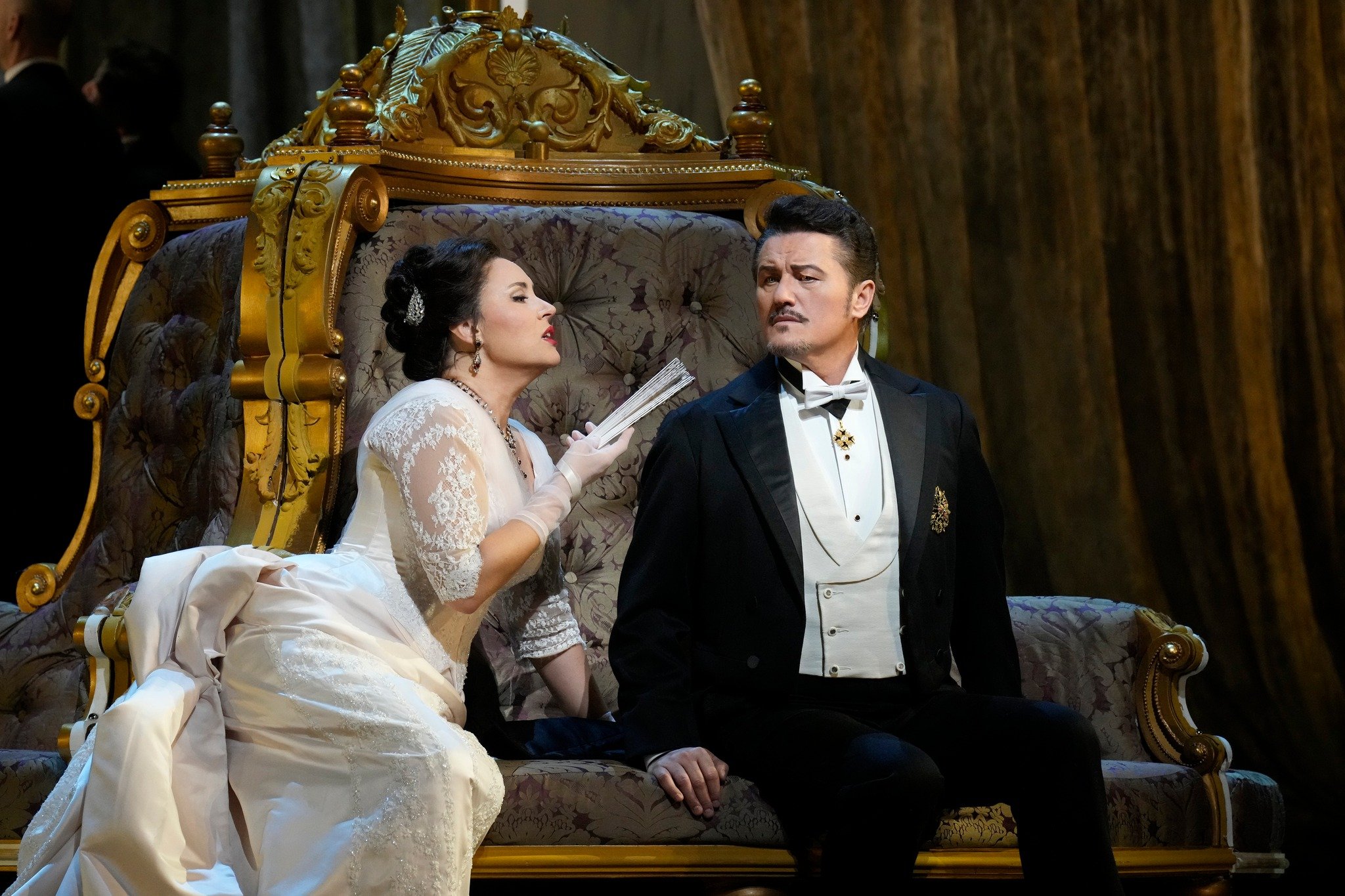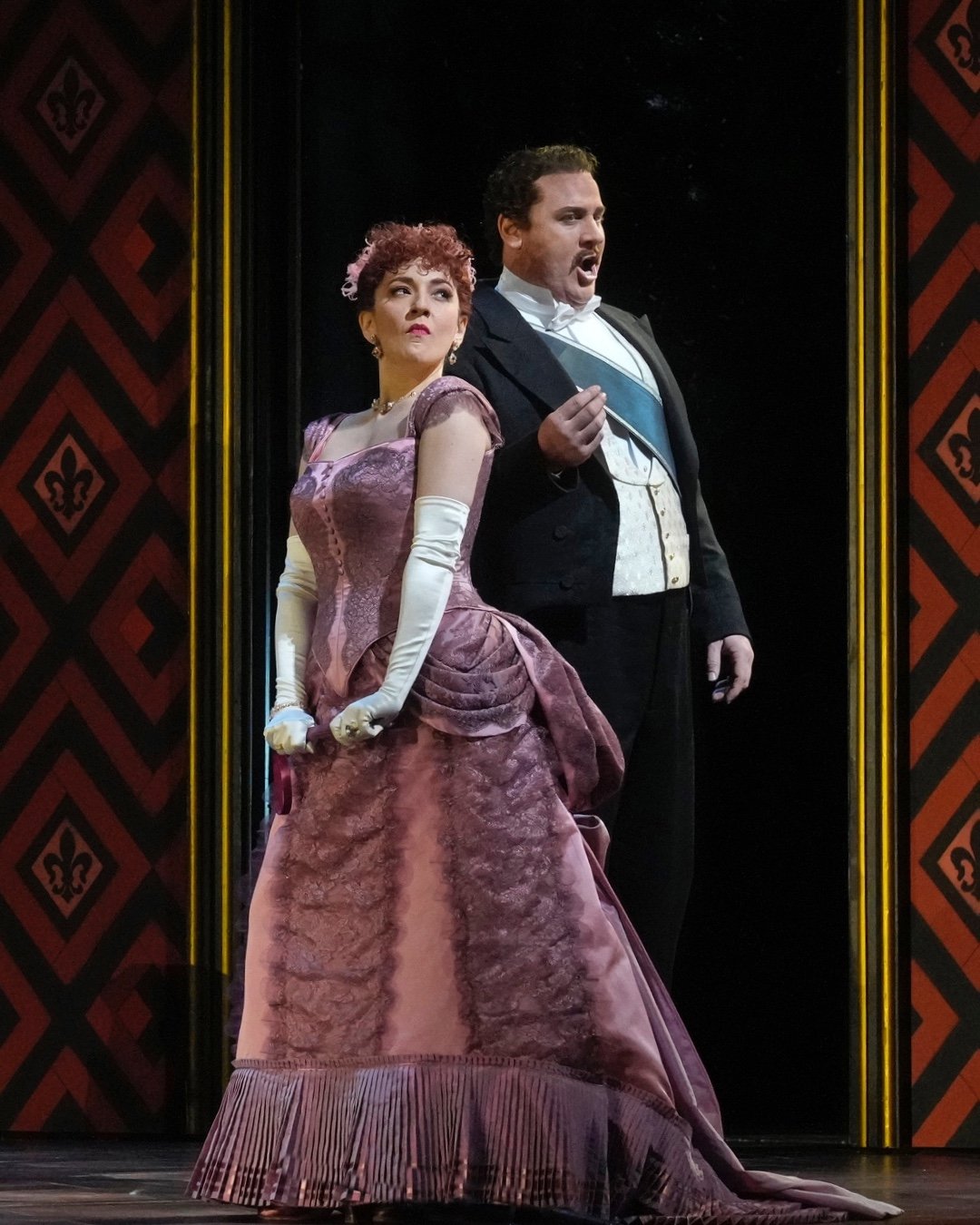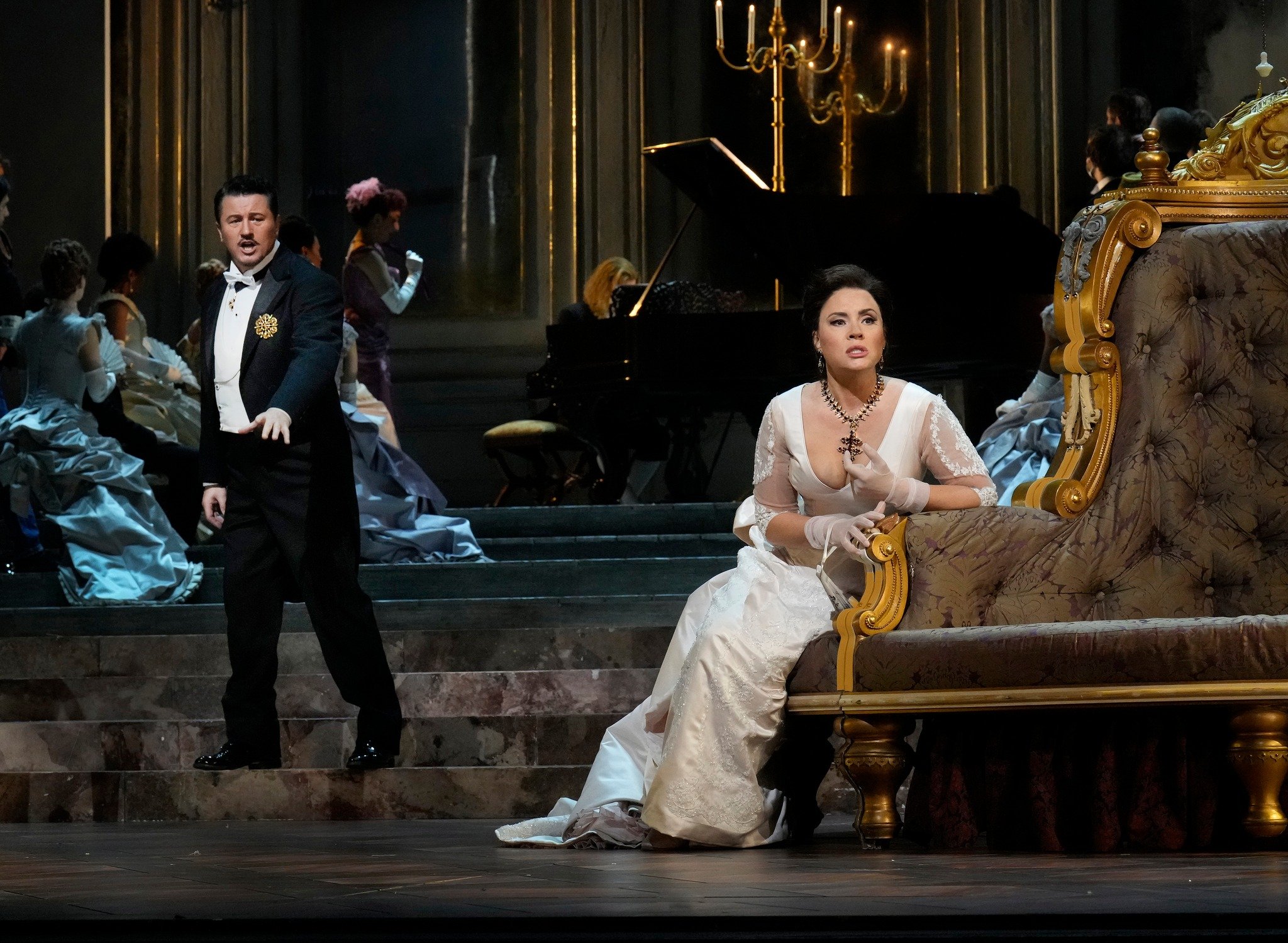My Night at the Opera: Fedora (PART 1)
Sonya Yoncheva and Piotr Beczała in Fedora (Ken Howard/Met Opera)
*SPOILERS AHEAD FOR FEDORA*
PRÈLUDE
Umberto Giordano’s verismo opera Fedora has been much pooh-poohed. It’s mounted mostly as a diva showcase, and I have yet to meet anyone who thinks the plot makes sense. “I’m not going to pretend this is a neglected masterpiece,” the show’s director, Sir David McVicar, said recently. With respect to the knight, I disagree. (Originally, I was content to call it a neglected gem, but after three additional viewings, I have decided that it is a neglected masterpiece.)
How do I know? Because I went to see it on January 7th, and I find all the criticism of the opera, if not entirely baseless, unfair. Allow me…
ACT 1
Fedora opened with the briefest of preludes. When the curtain parted, we were in a lavish Russian salon in the 1880s. A huge portrait of Princess Fedora Romazov’s fiancé, Count Vladimir Andreyevich Yariskin, hung opposite the door. Only a third of the stage was shown, the rest hidden behind the back wall. Vladimir’s salon felt small, intimate, but real. I felt as if I was sitting in it.
“Whoooooo!” Vladimir’s servant Sergei (Brian Vu) gasped. “La Principessa!” The Princess!
The extraordinary Sonya Yoncheva entered and the house burst into applause. Pleased, I joined in. Fedora’s jewels glittered and sparkled, making Sonya look like a diamond herself.
She brought serenity and beauty to her opening aria, her voice blooming in joy… then suddenly in horror as Vladimir (Patrick Cann) stumbled in, collapsing mortally wounded against a chair. “Ferito!” cried the detective, Gretch, sung by the transgender baritone Lucia Lucas. Shot! The orchestra let loose with a massive, crashing chord.
Sonya Yoncheva in Fedora (Ken Howard/Met Opera)
More shocked than shattered, Fedora let out some deep, aghast sighs, shook her head, and put her gloved hand to her mouth.
Her second aria, “Son gente risoluta,” gave me goosebumps, especially when her voice rose to an impassioned high note, then down, then just below the first note, then even lower. Simply put: 2, 1, 4, 3, 5.
The back wall became sheer from time to time, showing us the doctors and the bloodied Vladimir. It was sheer most of the time, except when I looked. Might that have been on purpose?
At that point, we were also introduced to baritone Lucas Meachem — one of my favorite Marcellos in La Bohème — as the French diplomat Giovanni De Siriex, although he got precious little to sing until the next act. For now, he stuck to questioning the servants in an attempt to solve the murder.
I was happy to see Paul Corona singing Dr. Loreck with his reassuring presence. He announced Vladimir’s death, and Fedora rushed in, at last unimpeded. The wall turned transparent again and I could see her bending over the body.
“Parla,” she begged him, speaking rather than singing. Speak. “Parla!” she repeated desperately, her voice rising. “Rispondi!” It was the sob of a devastated heart, and it crushed mine too.
She collapsed, weeping brokenly, and kissed him. The curtain fell slowly.
ACT 2
The immediately delightful music started before the curtain opened, a call to a waltz. When it did open, the rest of the stage was revealed and we were indeed at a ball, with lavishly dressed ladies and gentlemen waltzing. I anxiously awaited Rosa Feola, who soon sashayed in with a devil-may-care attitude as Countess Olga.
Rosa is blessed with a creamy, sweet, and gorgeous voice. The man on her arm — played by pianist Bryan Wagorn — bowed to Fedora with a roguish grin, his long blond hair flopping forward. “I present to you Lazinski,” said Olga, “the Polish maestro, grandson and successor of Chopin…”
Rosa Feola and Lucas Meachem in Fedora (Ken Howard/Met Opera)
The audience and I had a good laugh at that! I’m used to Rosa perfectly singing the naive teenager Gilda in Rigoletto, and it was mountains of fun to see her as a coquette. She flirted with nearly every man, save for De Siriex (and Loris Ipanov, whom she left for Fedora).
Lucas Meachem made the most of his single aria, in which De Siriex paints a “precise” portrait of “adorable and hostile” Russian women. It’s a very fast and tricky aria, but he handled it confidently and nailed it.
Olga shot back with an aria comparing Parisian men to Veuve Cliquot wine: “It makes too much useless noise and spews too much foam.” It’s not a very difficult song, but what it lacked in vocal virtuosity, she made up for in theatricality, batting her eyes and miming a headache.
Then we got into the real heart of Act 2: Fedora and Loris (sung by star tenor Piotr Beczała), Vladimir’s murderer. First, though, we were treated to Fedora’s best-known aria, “Amor ti vieta.” I turned to my mother and bugged my eyes out by way of saying, “This is it!" Piotr’s earnest, passionate singing blew me away then and for the rest of the evening.
Piotr Beczała, Rosa Feola, Bryan Wagorn, and Sonya Yoncheva in Fedora (Ken Howard/Met Opera)
During the following confession-confrontation scene, the orchestra was largely silent. The only accompaniment was Lazinski’s piano, perfectly balancing the solo display upstage and the dramatic scene unfolding downstage.
While Fedora sat down to write a letter to the Russian police accusing Loris of Vladimir’s murder, Vladimir’s ghost appeared to her. He held out his arms to her and they waltzed gently together to Giordano’s gorgeous interlude. I felt sad, though I knew that the cheating good-for-nothing didn’t deserve a tear. Fedora loved him and he was dead, and that was all that mattered. I refused to cry.
Soon, she also was to find out that he was a cheating good-for-nothing. As Sonya read the “smoking gun” letter, I got chills when the music from her first aria returned, along with the 2, 1, 4, 3, 5 vocal leaps, delivered with new ferocity. Piotr’s heartfelt sorrow as Loris brought much depth to the duet “Vedi, io piango,” as did Fedora’s newfound sympathy and tenderness for him. At last, she yielded to him with their shared, “T’amo!” I love you! The curtain fell.







